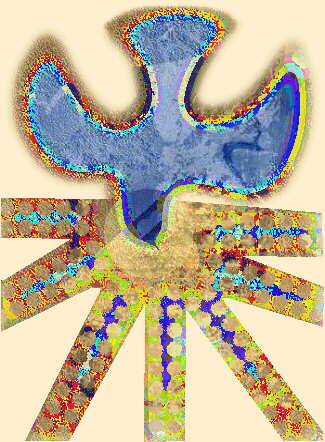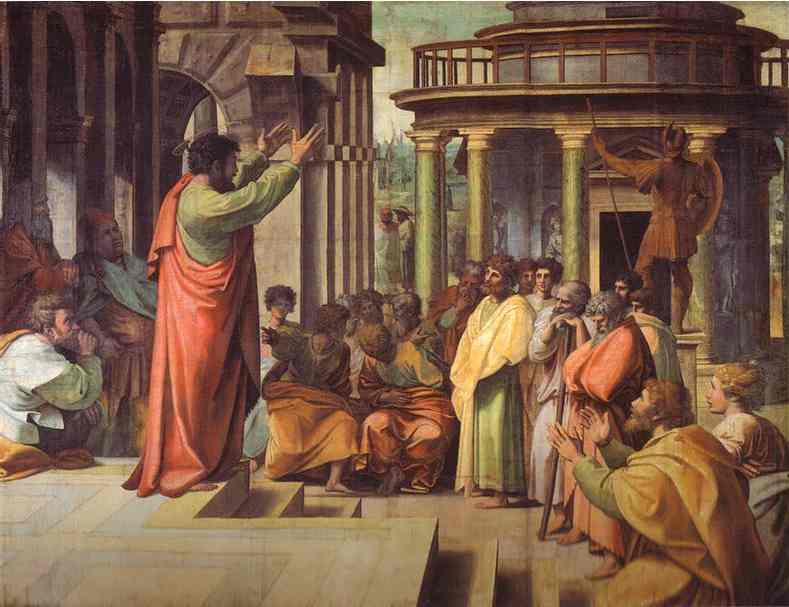




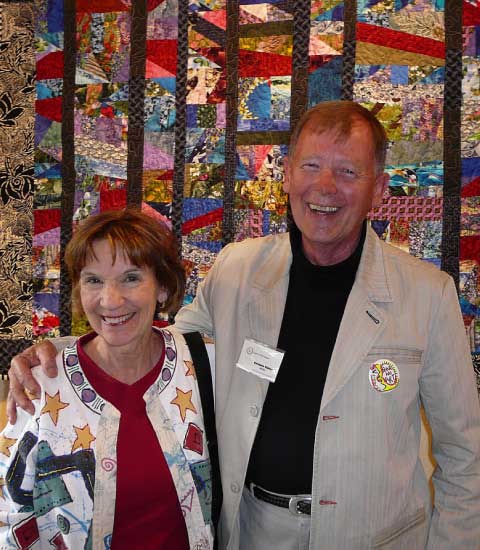
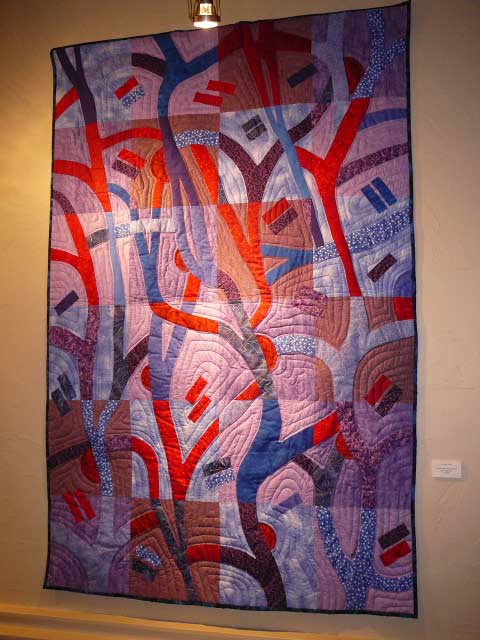
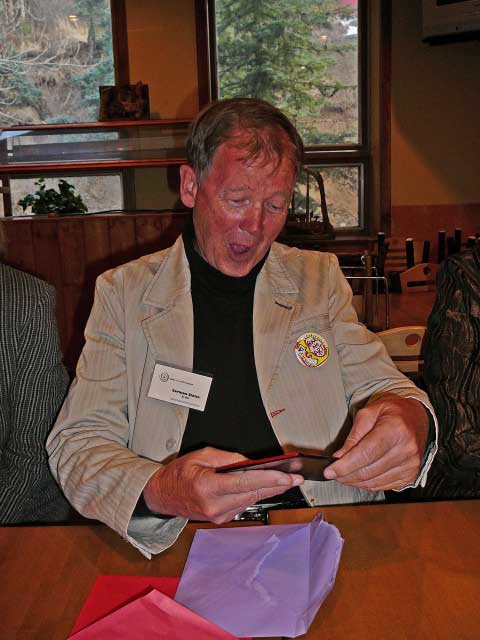
* Paul is depicted preaching to a group of councillors at the Areopagus (the seat of the judicial council) at Athens. Behind Paul are two figures paying him rapt attention: the bearded man is Janus Lascaris, the director of the new Greek academy in Rome, and the plump, clean-shaven man is Pope Leo X. As Leo was interested in the reform of preaching, and considered Paul the 'Prince of Preachers,' Raphael's depiction of him listening closely to Paul showed that he was following in Paul's footsteps. Leo had also recently set up a Greek academy in Rome, so the inclusion of the portrait of its director was not only appropriate to the scene's Athenian setting (Lascaris was Greek), but may have been a veiled compliment on Leo's promotion of classical scholarship.
The couple in the lower right-hand corner, who have been converted to Christianity by Paul's eloquence, do not appear to fit into the composition as a whole, in either position or scale. They were probably painted in by Raphael's follower Giulio Romano. Apparently, they even confused the tapestry weavers. An inscription on the woman's shoulder, faintly visible today, indicates to which tapestry this section should belong.
** In Renaissance art, the term cartoon refers to a full-size preparatory design for an artwork in another medium. They were used in the creation of frescoes, other large-scale wall paintings, and, in this case, for tapestries. The word cartoon derives from the Italian cartone, which simply means a large piece of paper.
http://www.vam.ac.uk/collections/paintings/features/raphael/what/index.html
27 ...
though indeed he is not far from each one of
us.
Acts
17:22-31

